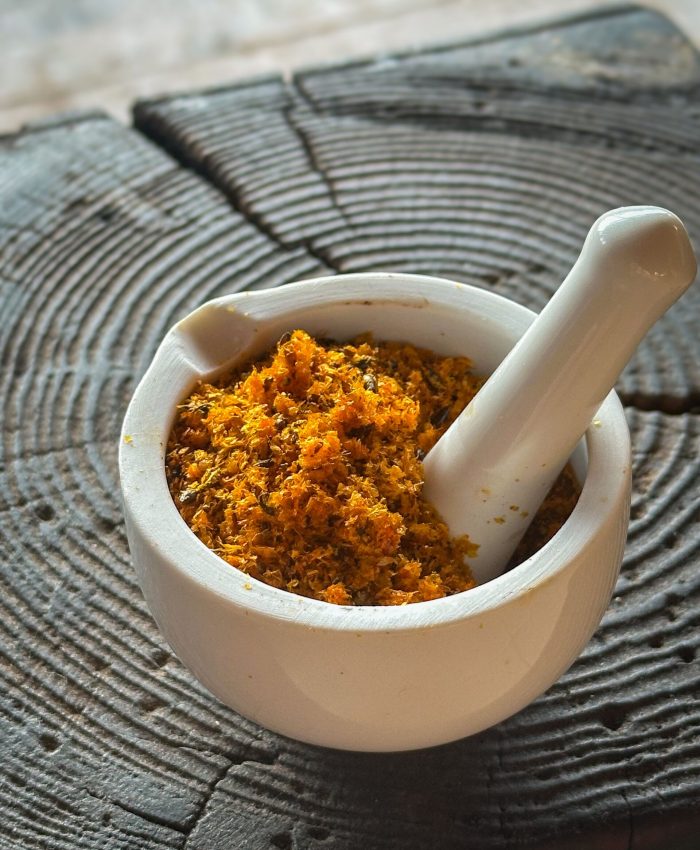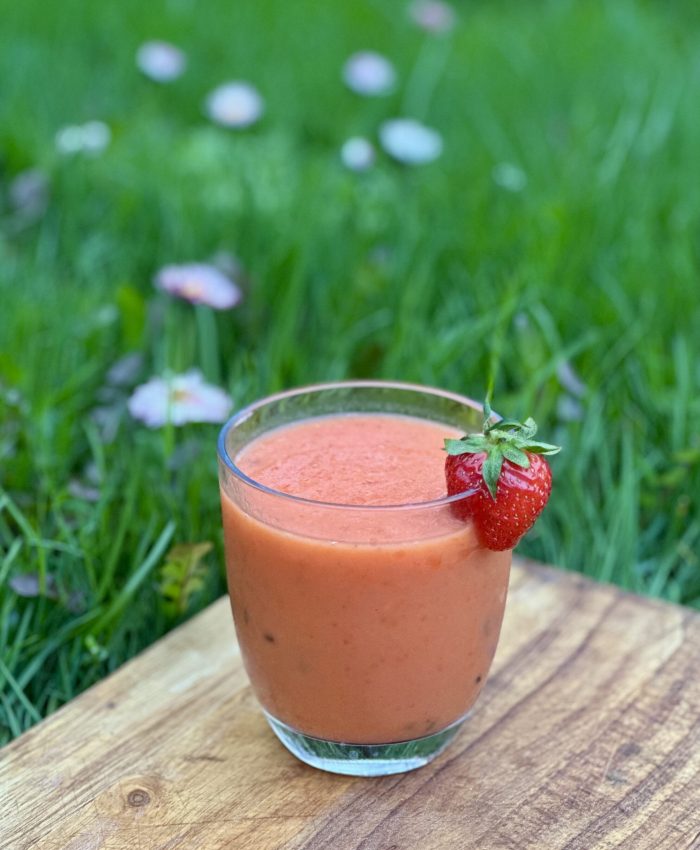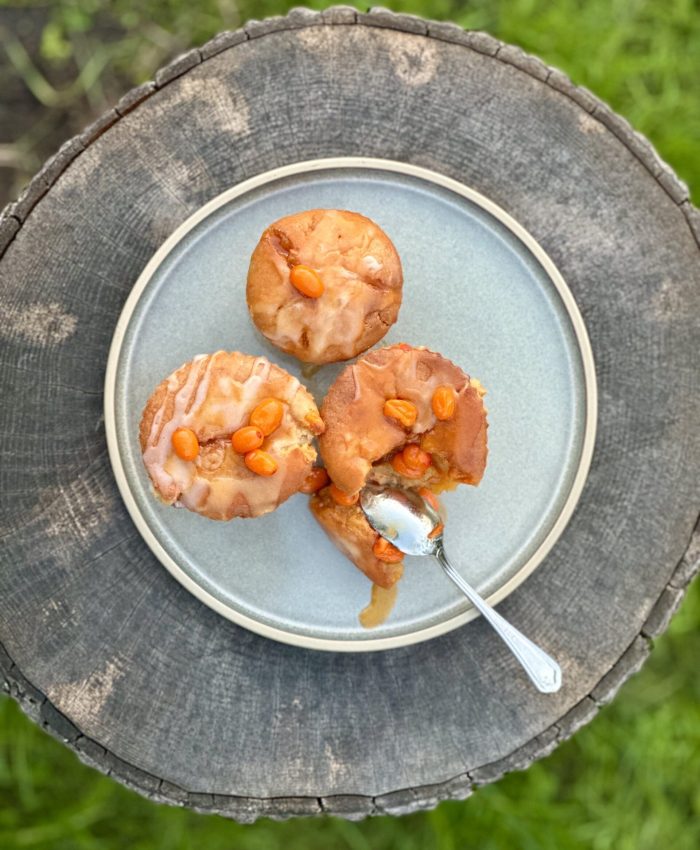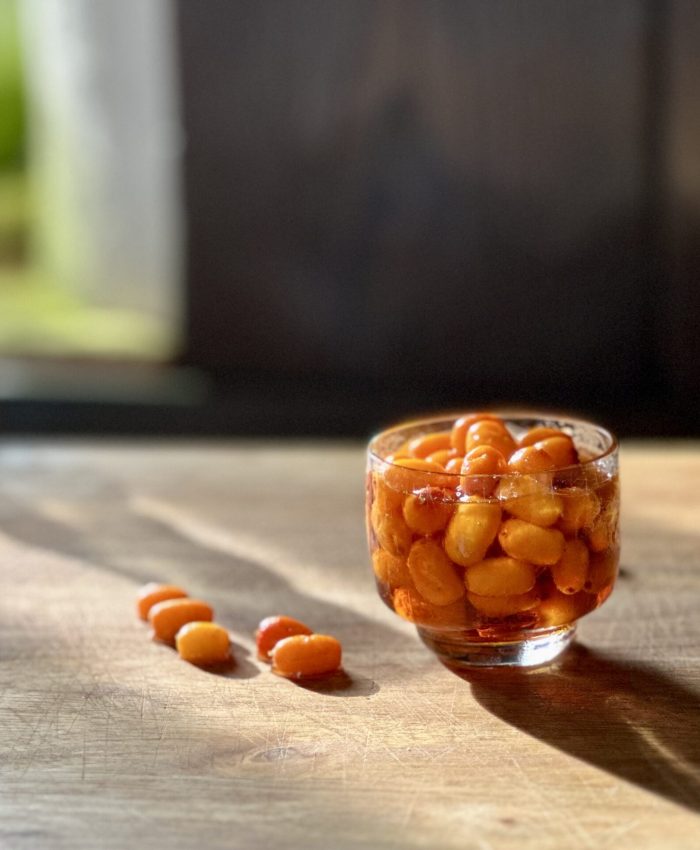Delicately tart yet rich and creamy – this is the perfect cake when you’re craving something homemade with a slightly special twist.
Sometimes, all you need is one great cake recipe. This sea buckthorn curd cake is exactly that – once you bake it, you’ll want to make it again. The result is balanced: not too sweet, not too sour, just what a thoughtfully made cake with simple ingredients should be. Lime adds a light freshness to the filling, while sea buckthorn berries give the cake its unique character. The texture is creamy and soft but not overly airy. The crust is gluten-free.
In Estonia, we traditionally use curd (kohupiim in Estonian) in baking – a fresh, grainy dairy product somewhat similar to farmer’s cheese, quark, or dry cottage cheese. If you can’t find curd, quark or a mixture of ricotta and Greek yogurt can work well as a substitute.
Ingredients
Crust:
- 100 g unsalted butter, softened
- 50 g unrefined cane sugar
- 1 egg
- 100 g rice flour
- 1 tsp baking powder
Filling:
- 500 g vanilla curd (or quark)
- 200 ml heavy cream
- 2 eggs
- 2 tbsp potato starch
- 2 tsp vanilla sugar
- 100 g unrefined cane sugar
- Juice of ½ lime
To serve:
- Frozen sea buckthorn berries (for topping and on the side)
Instructions
Crust:
Mix the softened butter and sugar until combined. Add the egg and whisk until smooth. Stir in the rice flour and baking powder. Press the dough evenly into a buttered 24 cm (9.5 inch) springform pan, covering the base and the sides (up to 3–4 cm / ~1.5 inches).
Filling:
Place all filling ingredients – curd, cream, eggs, sugars, starch – into a large bowl. Whisk until creamy. Add the lime juice, mix again, and pour the filling onto the crust.
Bake in a preheated oven at 175–180°C (350°F) for 45–50 minutes. Let cool completely before serving.
Top with frozen sea buckthorn berries and serve with a few extra on the side.
Tips:
- For a lighter, airier texture, beat the filling for 3–4 minutes before baking.
- If you prefer a denser, more traditional curd-like texture, mix just until combined.
- When pressing the dough into the pan, try to keep the edges even for a nicely shaped crust.
For the curious
Curd is one of the oldest dairy products in the world. Archaeological evidence suggests that long before the invention of cheese or yogurt, people were already making a simple curd-like substance by fermenting milk. The ancient Romans called it lac concretum – “hardened milk” – and often ate it sweetened with honey.
In Estonia, curd has held a special place in traditional cooking for centuries. It was easy to make, nourishing, versatile, and perfect for both savory dishes and sweet treats. In our case, it produces a perfect sea buckthorn curd cake. Curd is also valued for its high protein content, but for our ancestors, it was also a practical way to preserve food and avoid waste.







